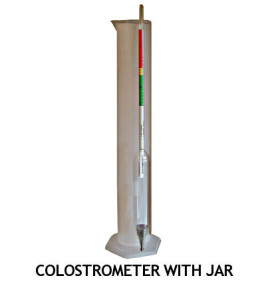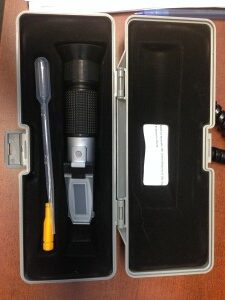It can be difficult to evaluate the quality of colostrum (cow VS heifer, mastitis or not, etc.). There are several tools that can be used to measure the quality of the colostrum.
One of these is a Colostrometer:

Unfortunately, there are some disadvantages to using this tool. First of all, it is very fragile (glass). Secondly, it is temperature-sensitive. This means that if your colostrum is too warm, it may appear to be no good but in fact, it is. On the other hand, if it is too cold, the opposite may happen – you will be sure it is good but it isn’t! Too much variability! For these reasons, we do not recommend using the colostrometer!
The Brix Refractometer, however, is more accurate, solid and not temperature dependant. You can read more about the Brix in the “Calves” section of our website.

So it is easy to determine if the colostrum we have is actually of good quality or not, but how can we help produce good quality colostrum? Here are some factors affecting the quality that is under our control:
- Dry cow nutrition (enough energy, enough minerals, etc.)
- Vaccination during dry period (Calf guard, Scourguard, Pyramid 5)
- Excessively long (over 90days) dry period
- Too short a dry period
- Delay from calving to harvest
This last one is very interesting. What can we do with a cow leaking milk before calving? The answer is: prepare colostrum replacers (frozen or powder). We know that the colostrum from these cows will not be good, because the first milk coming out is very good colostrum – but we are losing it as it leaks to the ground! After few liters have leaked away, we know that what remains won’t be of top quality ……
